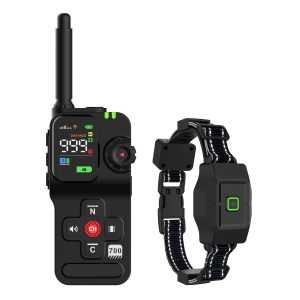KCSC Bark Control: A Comprehensive Guide for Peaceful Pet Training
Are you tired of your furry friend’s incessant barking disrupting your peace and quiet at home? If so, you’re not alone. Barking is a natural behavior for dogs, but excessive barking can be a nuisance for both the pet owner and the neighbors. Fortunately, there are effective solutions available, and one of the most popular options is the KCSC Bark Control system. In this blog post, we will delve into the world of bark control, explore the features of the KCSC Bark Control device, and provide you with expert tips on how to train your pet for a quieter, more harmonious living environment.
The Science Behind Barking
Before we dive into bark control solutions, it’s essential to understand why dogs bark in the first place. Dogs communicate through a variety of vocalizations, with barking being one of the most common forms of communication. Dogs bark to express excitement, to signal danger, to seek attention, or simply to communicate their emotions. While barking is normal, excessive barking can be a sign of underlying issues such as anxiety, boredom, or territorial behavior. By deciphering the root cause of your dog’s barking, you can tailor your training approach to address the specific triggers effectively.
Introducing KCSC Bark Control
The KCSC Bark Control device is a cutting-edge solution designed to help pet owners curb their dog’s barking habits effectively. This innovative device uses advanced technology to detect and emit ultrasonic sound waves that are inaudible to human ears but serve as a deterrent to dogs. The KCSC Bark Control system is humane, safe, and non-invasive, making it an ideal choice for pet owners who want to train their dogs without resorting to harsh methods or punitive measures.
Tips for Effective Bark Control Training
Training your dog to control its barking requires patience, consistency, and positive reinforcement. Here are some tips to help you effectively train your pet using the KCSC Bark Control device:
- Start training early: It’s easier to instill good habits in puppies than to break bad habits in older dogs. Begin training your pet as soon as possible to reinforce desirable behaviors.
- Use positive reinforcement: Reward your dog with treats, praise, or playtime when it exhibits quiet behavior. Positive reinforcement will encourage your pet to repeat the desired behavior.
- Be consistent: Consistency is key to successful bark control training. Set clear boundaries, enforce rules consistently, and avoid sending mixed signals to your pet.
- Seek professional help if needed: If your dog’s barking persists despite training efforts, consult a professional dog trainer or behaviorist for tailored guidance and support.
Conclusion
In conclusion, the KCSC Bark Control system offers a humane and effective solution for pet owners looking to address their dog’s barking behavior. By understanding the science behind barking, introducing the right training tools, and incorporating positive reinforcement techniques, you can successfully train your pet for quieter, more harmonious interactions. Remember, patience, consistency, and love are the cornerstones of successful pet training. Embrace the journey of bark control training with optimism, and you’ll soon enjoy a peaceful and harmonious relationship with your beloved companion.




